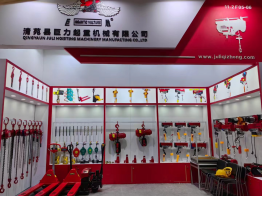


The Essential Role of Hand Fork Trucks in Modern Warehousing and Logistics
In today's fast-paced industrial environment, efficiency, safety, and precision are paramount in managing logistics and warehousing operations. Among the various tools used to facilitate these processes, hand fork trucks stand out as a versatile and essential piece of equipment. These manual handling devices, also known as pallet jacks or manual pallet trucks, enable operators to move heavy loads with ease, thereby improving workflows and productivity within warehouses and retail environments.
The Basics of Hand Fork Trucks
Hand fork trucks are designed to lift and transport pallets and other heavy loads over short distances. They typically consist of two forks that slide under the pallet, a hydraulic lifting system, and a handle for maneuvering. Made from durable materials, these trucks can support substantial weights—typically ranging from 2,000 to 5,500 pounds—making them suitable for various industrial applications. The simplicity of their operation allows even less experienced personnel to handle materials effectively, reducing the need for specialized training.
Advantages of Hand Fork Trucks
One of the most significant benefits of using hand fork trucks is their ability to enhance workplace efficiency. In environments where products are frequently moved or stored, the speed at which goods can be transported impacts overall productivity. By minimizing the time taken to move items from one location to another, businesses can significantly improve their operational flow.
Furthermore, hand fork trucks are incredibly cost-effective. Unlike electric forklifts, which require expensive batteries and maintenance, manual pallet jacks have lower upfront costs and reduce ongoing operational expenses. They do not require charging stations or electrical outlets, making them especially adaptable for businesses with varying workspace conditions.
Safety Considerations

While hand fork trucks are generally safe to operate, proper use is crucial to prevent workplace accidents. Operators should be trained in safe handling techniques, including how to lift and transport loads properly. Techniques such as stacking pallets correctly and ensuring that the load is within the weight limits of the hand truck are critical to maintaining safety.
Additionally, the ergonomic design of hand fork trucks reduces the risk of injury by minimizing strain on the operator’s back and legs. Many models now feature adjustable handles, allowing users to find a comfortable grip and reducing the likelihood of musculoskeletal injuries.
Environmental Impact
In an era of increasing environmental awareness, the hand fork truck's manual operation promotes sustainability. These trucks do not consume electricity or fossil fuels, contributing to a reduction in carbon emissions. As businesses strive for greener practices, incorporating hand trucks into their operations aligns with eco-friendly goals.
Versatility Across Industries
Hand fork trucks are utilized across a variety of industries, including retail, manufacturing, food service, and logistics. Their adaptability means that they can handle various types of loads, from boxes and crates to complete pallets of goods. In grocery stores, for example, hand fork trucks are used to restock shelves quickly and efficiently. In manufacturing settings, they facilitate the movement of raw materials on the production floor.
Conclusion
In conclusion, hand fork trucks play a vital role in modern warehousing and logistics. Their simplicity, cost-effectiveness, and ability to enhance productivity make them an indispensable tool for businesses of all sizes. By prioritizing safety and training, companies can harness the full potential of these manual handling devices, ensuring efficient operations while safeguarding their workforce. As industries continue to evolve, the hand fork truck remains a steadfast ally, bridging gaps in the logistics chain and contributing to overall operational excellence.



